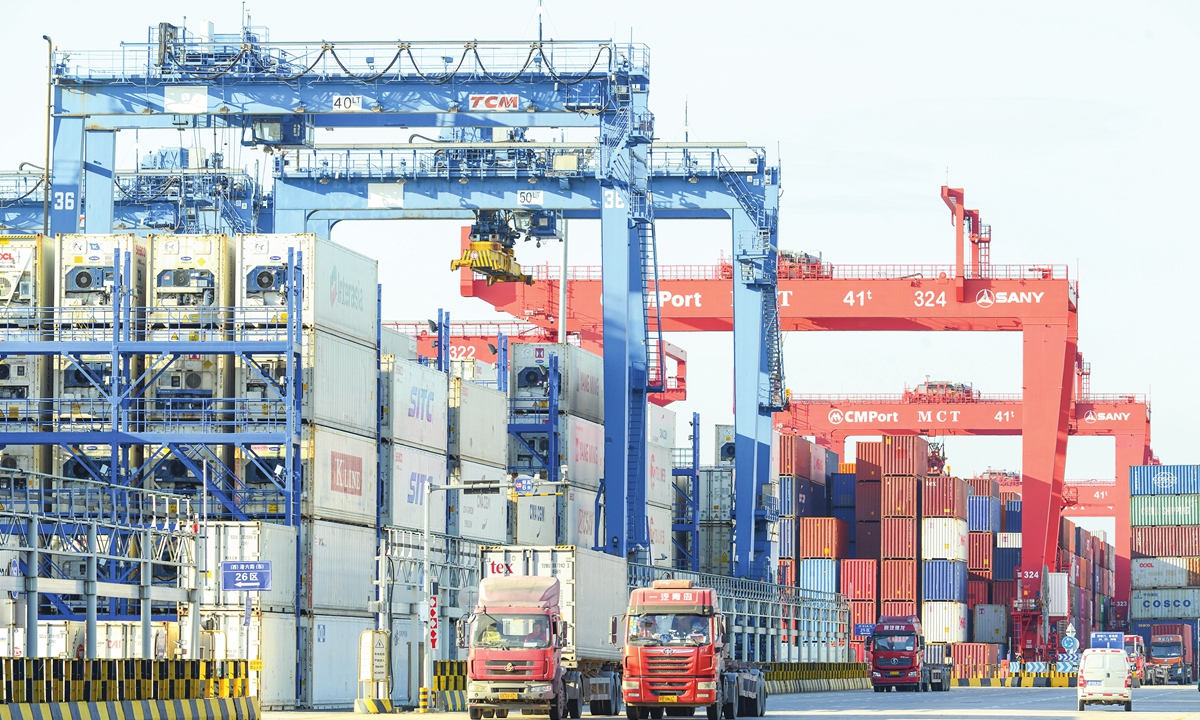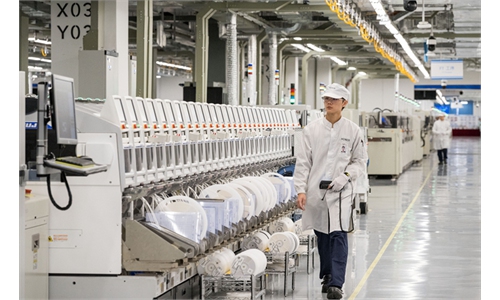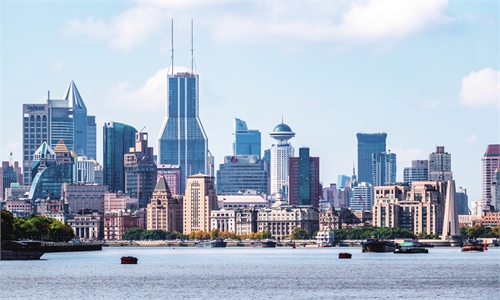From opening-up to connectivity: Shenzhen companies go global, pioneering advanced manufacturing and technology to BRI partner countries

A view of Shekou Port in Shenzhen, South China's Guangdong Province Photo: Chen Tao/GT
Editor's Note:
This year marks the 10th anniversary of the China-proposed Belt and Road Initiative (BRI), a global cooperation platform that demonstrates China's vision and provides solutions for the reformation of the global governance system and other multifaceted challenges. Reflecting on the development of the BRI over the last decade, there has been no shortage of evidence demonstrating its success, a momentum that relentless Western crackdowns and smear have been unable to curtail. Standing at this monumental juncture, the Global Times is publishing a series of articles to help readers understand the journey of the BRI over the last decade from multiple perspectives, and how the initiative will positively commence ahead. This is this year's last installment in the series, examining how traders, ports and producers in Shenzhen, South China's Guangdong Province, have witnessed the development of BRI at the frontline.
Gazing out of the window from the Shekou Customs office building in Shenzhen, South China's Guangdong Province, one is greeted with the vibrant scene of Shekou Port. Here, trucks navigate purposefully, transporting containers from various corners of the world.
Despite facing pressure due to weakened external demand in foreign trade, the impact is limited here. Shenzhen's crucial port, Shekou Port, primarily serves countries participating in the China-proposed Belt and Road Initiative (BRI), including Southeast Asian routes. Benefiting from the Regional Comprehensive Economic Partnership and the positive effects of the BRI, local businesses continue to experience growth in orders.
As an emblematic symbol of China's reform and opening-up, Shenzhen has undergone significant transformations in the past decade. The introduction of the China-proposed BRI in 2013 catalyzed pivotal changes, propelling this coastal city into a key role as a major manufacturing and trade hub with heightened global competitiveness.
From 2013 to 2022, the cumulative import and export volume between Shenzhen and countries participating in the BRI reached 8.63 trillion yuan ($1.21 trillion), boasting an average annual growth rate of 5.1 percent.
Moreover, the proportion of trade with Belt and Road partner countries in Shenzhen's total import and export increased from 22.4 percent in 2013 to a historic high of 32.5 percent in 2022, latest data that Shenzhen Customs sent to the Global Times shows.
Riding the wave
Few understand the opportunities that the BRI has offered to businesses better than Sherry Cheng. As general manager of the Brand Marketing Department of Sunwoda Mobility Energy Technology Co (Sunwoda), a Shenzhen-based high-tech company focusing on energy storage system battery solutions, Cheng emphasizes the significant market opportunities for new-energy vehicles presented by the BRI.
Green technology plays a pivotal role in the BRI, aligning with the sustainable development requirements of partner nations. Recognizing this as an opportunity, Sunwoda has been actively responding by strengthening collaboration and communication with the international market.
Riding the wave of strong momentum, currently, Sunwoda is experiencing an annual compound growth rate of 43 percent, maintaining a swift upward momentum, Cheng told the Global Times, noting that their overseas markets contribute to 40 percent of the company's total revenue, and this percentage continues to rise steadily.
"By engaging in international cooperative projects and establishing overseas production bases, the company aims to enhance its competitiveness and level of internationalization," Cheng said.
Another new-energy manufacturing company, BYD, headquartered in Shenzhen, has also experienced rapid growth under the BRI over the past decade. As early as 2013, BYD made inroads into the ASEAN market under the guidance of the initiative, collaborating with local partners to promote the export of new-energy passenger and commercial vehicles.
In September of this year, BYD announced the decision to establish a factory in Uzbekistan, a country participating in the BRI, to manufacture electric vehicles there.
A decade of the BRI has also witnessed a significant transformation and upgrade in the Chinese new-energy vehicle industry, moving toward high-end, green, and intelligent development, BYD told the media.
Sunwoda and BYD are just two examples of how local companies are embracing the BRI advantages. Riding on this sustained momentum, cooperation between Shenzhen enterprises and relevant countries and regions continues to expand.
From significant infrastructure development to diverse business expansions, spanning traditional sectors such as energy and transportation to cutting-edge fields like big data and satellite navigation, the city is contributing its strength to the high-quality construction of the Belt and Road.
To assist enterprises in maximizing the benefits of the BRI and further unleash the economic development potential of the region, local authorities have implemented additional supportive measures in recent years.
From a foreign trade perspective, Shenzhen Customs has optimized the supervision of actual goods in container trains and customs clearance services. Through "point-to-point" coordination, customs address the specific needs of enterprises, ensuring timely customs clearance, inspections, and on-time shipments.
Meanwhile, the international expansion of individual enterprises depends significantly on the vital support of financial facilitation.
To provide assistance, the Shenzhen Branch of the Export-Import Bank of China has aided numerous high-quality enterprises in their overseas ventures. The bank's operations cover 34 countries participating in the BRI, including Kazakhstan, Turkey, Singapore, among others, according to media reports.
Over the past five years, the bank has cumulatively disbursed over 90 billion yuan in BRI-related loans.
Rising prospects
In the future, Shenzhen should leverage its position as a financial center and the resources of financial institutions and markets to better support the BRI, Yu Lingqu, director of Financial Development and SOE Research Department at the China Development Institute in Shenzhen, Guangdong Province, told the Global Times.
For instance, the Shenzhen Stock Exchange is exploring the opening of capital markets to investors from partner countries and facilitating project financing for the Belt and Road construction, which, as Yu noted, is a way to advance BRI support.
In the coming years, Shenzhen, along with more Belt and Road partner countries, can further deepen its involvement in the field of new infrastructure, particularly in assisting partner nations in developing communication network infrastructure such as 5G, the Internet of Things, and satellite internet, Yu said.
Shenzhen stands out in the field of digital economy, with technology giants such as Huawei, ZTE, and Tencent leading the way. These industry leaders have strategically positioned themselves in Belt and Road markets, laying a solid foundation to support partner countries in achieving digital transformation, according to media reports.
"Many countries participating in the BRI aspire to emulate Shenzhen's experience in developing economic zones and innovative industries… in the next decade, Shenzhen can further disseminate its expertise to these BRI partner countries," Liang Haiming, dean of the Hainan University Belt and Road Research Institute, told the Global Times.



